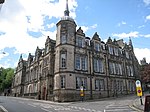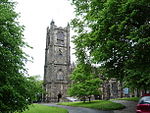Gillows of Lancaster and London

Gillows of Lancaster and London, also known as Gillow & Co., was an English furniture making firm based in Lancaster, Lancashire, and in London. It was founded around in Lancaster in about 1730 by Robert Gillow (1704–1772). Gillows was owned by the family until 1814 when it was taken over by Redmayne, Whiteside, and Ferguson; they continued to use the Gillow name. Gillows furniture was a byword for quality, and other designers used Gillows to manufacture their furniture. Gillows furniture is referred to by Jane Austen, Thackeray and the first Lord Lytton, and in one of Gilbert and Sullivan's comic operas. In 1903 Gillows merged with Warings of Liverpool to become Waring and Gillow and although the furniture remained of a high quality it was not as prestigious.
Excerpt from the Wikipedia article Gillows of Lancaster and London (License: CC BY-SA 3.0, Authors, Images).Gillows of Lancaster and London
Castle Hill, Lancaster Vale
Geographical coordinates (GPS) Address Nearby Places Show on map
Geographical coordinates (GPS)
| Latitude | Longitude |
|---|---|
| N 54.04999 ° | E -2.80359 ° |
Address
Castle Hill
Castle Hill
LA1 1YP Lancaster, Vale
England, United Kingdom
Open on Google Maps











